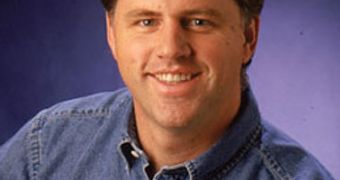While studying newts and salamanders, researchers figured out that these animals can heal their damaged hears if the need arises. Humans cannot do this, and the reason why has always eluded scientists. Now, US investigators propose a new explanation for this inability.
In order to provide the most relevant results, scientists at the University of California in Los Angeles (UCLA) focused their attention on specialized heart muscle cells called myocytes. These cells are known to lose their ability to proliferate at a given point.
This phenomenon leads to the heart's overall inability to regenerate itself after suffering damage. The American team proposes that it may be possible to reprogram a patient's myocytes so that they regain this ability. If confirmed, the findings could help million of people suffering from heart diseases.
Experts used cell lines and lab mice as proxies for the human hear in this study. Their data suggests that the reprogramming of relevant cardiac cells could take place within the heart itself. The treatment would enable the muscle to heal itself, and restore full cardiac functionality.
Mammals such as ourselves only have the ability to regrow heart cells for the first 10 days after birth, says the senior author of the research, Dr. Robb MacLellan. He holds an appointment as a researcher with the UCLA Eli and Edythe Broad Center of Regenerative Medicine and Stem Cell Research.
The investigator believes that this ability can be “revived” in children, adults and seniors as well, if only the correct mechanism for doing so is discovered. In a paper he and his group published in the August 8 issue of the Journal of Cell Biology, he says that his team may have found a way.
In the paper, he argues that the myocytes' cellular clock can be reverted back to a time when the cells were capable of proliferating and regrowing cardiac muscles. After birth, cardiac cells are made of progenitor stem cells.
After the heart forms in full, no back-up stem cells remain, as all of them differentiate into specific heart cells. In other species, this does not happen, which may explain their advanced healing abilities.
“These salamanders and other lower organisms have the ability to de-differentiate cardiac myocytes, or take them back to an earlier, more primitive state, which allows them to reenter the cell cycle, creating new heart muscle,” MacLellan says.
“In mammals, we've lost that potential. If we knew how to restore that, or knew the reason why adult myocytes can't do it, we could try to figure out a way to use nature's methods to regenerate the heart,” the expert goes on to say.
He reveals that mammals' hearts evolved in this manner due to their large size. Undifferentiated myocytes do not contract as efficiently as fully-matured ones, which makes for an inefficient heart.
“The way we evolved, in order to maintain blood pressure and flow, we had to give up the ability to regenerate the heart muscle. The up-side is we got more efficient cardiac myocytes and better hearts. But it was a trade-off,” the UCLA expert says.
The UCLA team believes that the cell-cycle mechanism is key to regaining this ability. Experts can use advanced techniques to temporarily stop the actions of proteins responsible for blocking this process.
When this happens, myocytes may reengage in a cellular cycle that reverts them back to a stage of development where they can proliferate. Once the damage is repaired, the blocking molecules would be turned back on, restoring efficiency to the heart muscle.
UCLA scientists are currently investigating several delivery mechanisms that may deliver blocking RNA to these proteins. However, their research is still in the earliest stages, and many years will pass until it is brought to the market.

 14 DAY TRIAL //
14 DAY TRIAL //